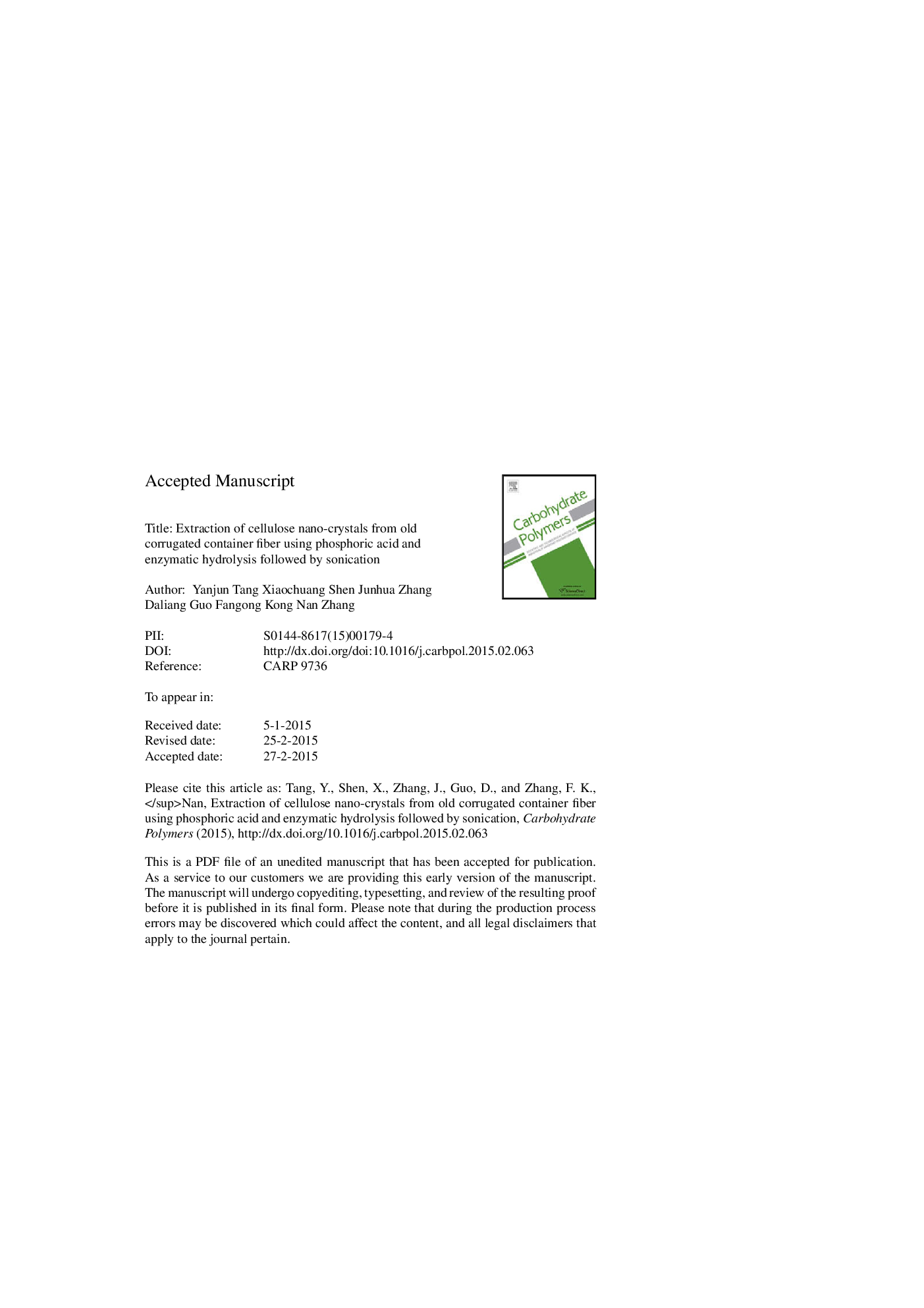| Article ID | Journal | Published Year | Pages | File Type |
|---|---|---|---|---|
| 7788769 | Carbohydrate Polymers | 2015 | 31 Pages |
Abstract
Due to its amazing physicochemical properties and high environmental compatibility, cellulose nano-crystals (CNC) hold great promise for serving as a strategic platform for sustainable development. Now, there has been growing interest in the development of processes using waste or residual biomass as CNC source for addressing economic and environmental concerns. In the present work, a combined process involving phosphoric acid hydrolysis, enzymatic hydrolysis and sonication was proposed aiming to efficiently exact CNC from low-cost old corrugated container (OCC) pulp fiber. The effect of enzymatic hydrolysis on the yield and microstructure of resulting CNC was highlighted. Results showed that the enzymatic hydrolysis was effective in enhancing CNC yield after phosphoric acid hydrolysis. CNC was obtained with a yield of 23.98Â wt% via the combined process with phosphoric acid concentration of 60Â wt%, cellulase dosage of 2Â mL (84 EGU) per 2Â g fiber and sonication intensity of 200Â W. Moreover, the presence of enzymatic hydrolysis imparted the obtained CNC with improved dispersion, increased crystallinity and thermal stability.
Keywords
Related Topics
Physical Sciences and Engineering
Chemistry
Organic Chemistry
Authors
Yanjun Tang, Xiaochuang Shen, Junhua Zhang, Daliang Guo, Fangong Kong, Nan Zhang,
